I believe that there are a number variables involved in helping people develop a better relationship with their dog. By understanding these variables, ideas, and understanding the individual personality of the dog you own, it also enables you to enhance your training sessions. We want your dog to look forward to training and learning.
A variable is remembering that your personality is different from anyone else, and your dog’s personality is different from that of any other dog. It’s the chemistry and combination between you and your dog’s personalities that make your relationship so special and unique. This is something I probably love most about helping clients and their dogs.
I think one of the biggest mistakes a new pet owner can make is training a new dog before a relationship is established. Successful dog trainers will tell you a dog is the one animal that wants nothing more than to please you and be your friend. This is a variable that you have the ability to enhance and build on. To skip this 10-20 day step is one of the major errors and mistakes a new pet owner can make. The bond and trust is everything!
- Step 1 – Get to know your dog
- Step 2 – Develop a relationship
- Step 3 – Build the trust
- You are now ready to start training
This is so important to understand because there are a number of breeds that really rely on that love and trust! Pitbulls and pitbull mixes are great examples of some of these types of dogs. They thrive on the relationship! Some of the most awesome dogs I have met when I have done appearances or book signings at pet friendly trade shows and pet expos were pitbulls and pitbull mixes. Why is this? Simply because the owner or trainer took the time to understand the dog, socialize the dog, train the dog, and most importantly, build an awesome loving relationship with the dog. If these types of dogs are abused, not trained properly, left in the backyard to agitate, and a relationship is not established, MAJOR behavior problems can develop. This is why building the bond and relationship is so important with all dogs, but especially pitbulls and pitbull mixes.

Joel Silverman & Duke (1998)
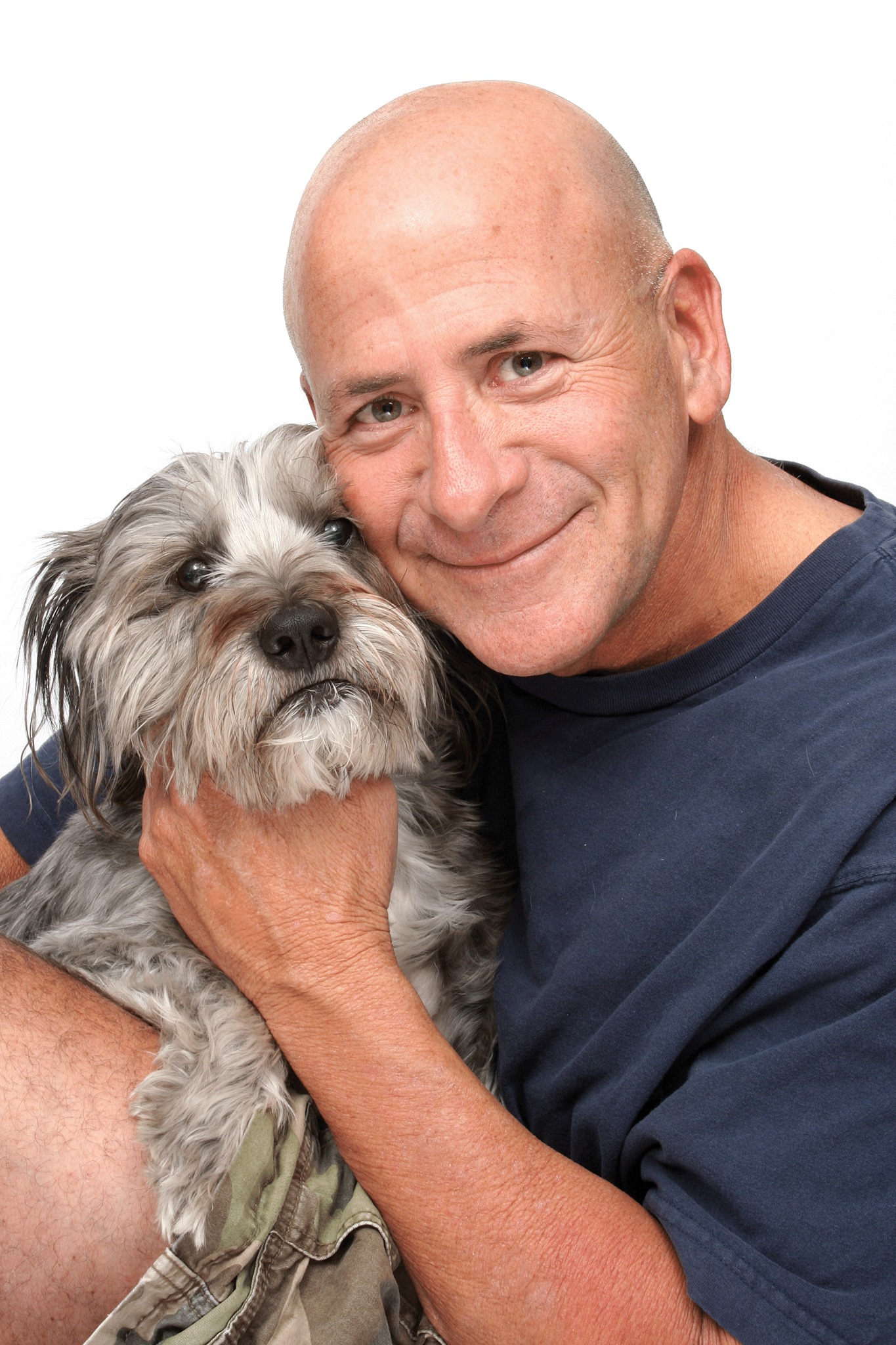
Joel Silverman & Foster (2008)
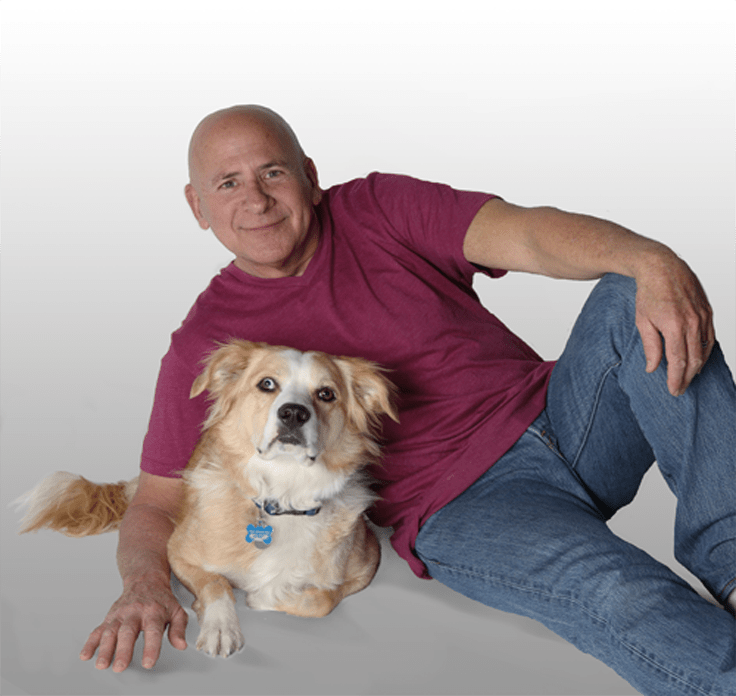
Joel Silverman & Duchess (2015)
TRAINING YOUR DOG BASED ON PERSONALITY
There are a number of misconceptions about dog training, and one of the biggest one is thinking for some reason you can train all dogs based on one training technique or style. Not only do we need to vary the training style based on the dog, but training styles can vary with the same dog within a few minute period.
WHAT COLOR IS YOUR DOG?® TRAINING STYLE
So now that we understand that all dogs are different, how to differentiate how to train each dog, and how to train? In 2009, I came out with my first book called What Color is Your Dog?® In 2016, I came out with a book that followed called More What Color is Your Dog?
I call this training style personality-based dog training. What we are going to do is take a look at our dog’s personality, and train the dog based on that personality. We give the dog a color based on the character.

Your dog is going to be one of five different colors, and the closer the color of your dog is to the center of the spectrum, the easier it is to train. You can see by our color spectrum, we have the yellow dog in the middle, and we call this dog mellow yellow. Only about 5-10% of dogs in shelters and humane societies are yellow. Some dogs are naturally yellow, and some dogs have become yellow over the course of time.
COOLER-COLORED DOGS
To the right of the yellow dog we have a green dog, and these dogs make up about 35% of dogs in animal shelters and humane societies. Green dogs are timid and apprehensive.
To the right of the green dog, we have a blue dog, and these dogs make up less than 5% of dogs in animal shelters and humane societies. Blue dogs are extremely shy, and afraid of a number of people, places, and things.
WARMER COLORED DOGS
To the left of the yellow dog we have the orange dogs, and these dogs make up about 35% of dogs in animal shelters and humane societies. Orange dogs are high strung. We see dogs with this personality pacing, barking, lunging, and jumping on people.
To the left of the orange dog, we have a red dog, and these dogs make up less than 5% of dogs in animal shelters and humane societies. These are orange dogs on steroids, as they are very out of control.
THE DIFFERENCE IN TRAINING WARM AND COOL DOGS
Now that you have gotten a good look at the color spectrum, you might have a good idea why I created it. The reason it was built was because the training of warm and cool dogs can sometimes differ like night and day. The way you walk, talk, move, reward, and even correct can change drastically between warm and cool dogs.
GREEN AND ORANGE DOGS
These two kinds of dogs make up about an amazing 75% of dogs in animal shelters and humane societies. It is essential people understand that the reason I created the color spectrum was to teach pet owners that dogs CAN change colors. A red dog can become orange, orange can become yellow, a blue can become green, and a green can become yellow. But if training is not done properly, a dog can go in the opposite direction as well.
A green dog is timid and apprehensive. If that dog is socialized, and the owner begins to train the dog using positive reinforcement, the dog can go yellow. If they never socialize or train the dog, can constantly yell at this timid dog, he can go blue.
The same thing applies to the high strung orange dog. If the dog is socialized and trained, the dog can go yellow. If the dog is never socialized or trained, the orange dog can go red.
CAN A DOG’S PERSONALITY SHOW YOU DIFFERENT COLORS?
The answer to that is YES! Let’s use a Jack Russel terrier as an example, and let’s say the dog is naturally a bit timid and is a green dog. So you are training the dog in the house as a green dog. But let’s say you want to train the dog to heel in the back yard, and the other day he killed a squirrel. So as you go in the back yard to train this dog, he shows you more of an orange high strung color rather than the timid green he showed you inside the house. If that is the case, when you are outside you train him based on the color he is showing which is orange.
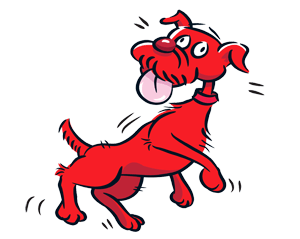
Red Dogs have a lot of energy, and you might even describe these dogs as being “off the wall”. Red Dogs are on the far end of our color spectrum, so they are going to be more challenging to train. Here are some characteristics:
- Lunging
- Pulling
- Jumping
- Barking
- Extremely reactive
- High prey drive
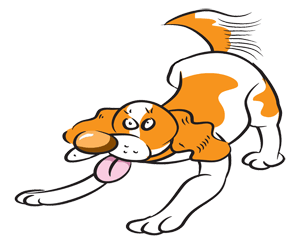
Orange Dogs have a lot of energy, but not nearly the extreme of the Red Dog. Because they are not on the far end of our color spectrum, they are not going to be as challenging as a Red Dog. They will have many of the same characteristics of a Red Dog but not the intensity level:
- Lunging
- Pulling
- Jumping
- Barking
- Reactive
- Higher prey drive

Yellow dogs are mellow and laid back. Some of these dogs are laid back because they were naturally Yellow when they were adopted, and some were Green or Orange, and over time, they became Yellow. Because these dogs sit in the middle of our color spectrum, and are not high strung and not timid or shy, they are the easiest to train.

Green Dogs are timid, shy, cautious, or apprehensive. When you go to an animal shelter to look for dogs, you will find a huge number of Green Dogs. Because they are not on the far end of the spectrum, they will not be as challenging as a Blue Dog. Here are some characteristics of Green Dogs:
- Cautious
- Apprehensive
- Ears back
- Tail tucked, but not tight
- Standing slouched
- Slight shaking
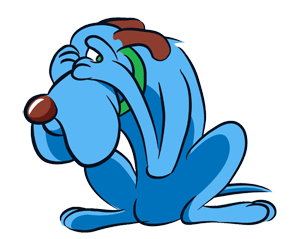
Blue Dogs are extremely timid, shy, cautious, or apprehensive. Thank goodness there is a very small percentage of Blue Dogs in animal shelters. The main reason a number of these dogs are Blue is because of either ppor care or training. Because they sit on the far end of the spectrum, they will be more challenging to train than Green Dogs. Here are some characteristics of Blue Dogs:
- Very cautious
- Very apprehensive
- Ears very far back
- Tail tucked very tight
- Standing very slouched
- A lot of shaking
Warmer-colored dogs like the Reds and Oranges need control, and cooler-colored dogs like the Blues and Greens need motivation. To train your dog using “personality-based” dog training, and using Joel’s What Color is Your Dog? method, a great book would be his latest MORE WHAT COLOR IS YOUR DOG? book released in 2016.
For more information on Joel Silverman’s dog training style or his dog trainer certification courses that are OPEN TO EVERYONE, click here>> or contact us.


